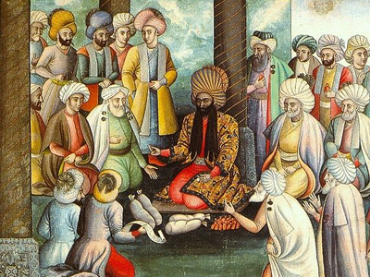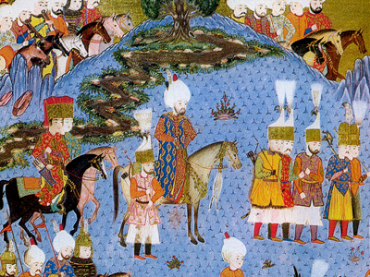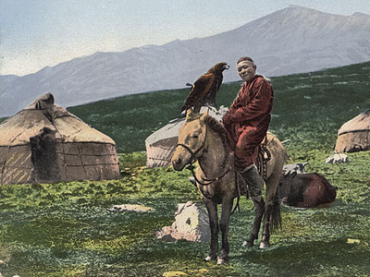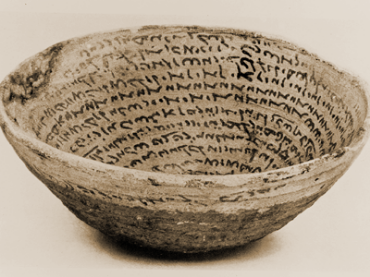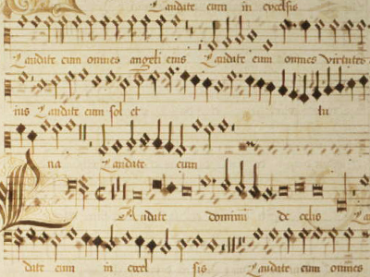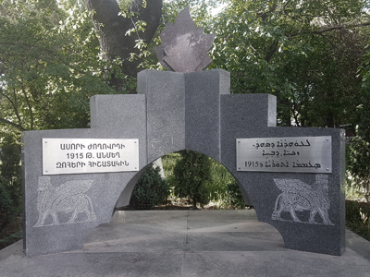History
The Tragedy of the Assyrians
ISBN: 1-59333-413-3
The Tragedy of the Assyrians depicts the massacres that befell the Assyrians in Iraq in 1933, following their uprooting from their homelands during World War I.
$139.00
The History of Yaballaha III and of His Vicar Bar Sauma
Series: Kiraz Chronicles Archive 13
ISBN: 1-59333-414-1
This book gives an introduction and an annotated English translation of the Syriac account of Yaballaha III, Church of the East Patriarch, and his vicar Bar Sauma, the Mongol Ambassador to the Frankish courts at the end of the thirteenth century. The translation is based on Bedjan’s 1895 edition of the Syriac text (also available from Gorgias Press). In addition to the translation, a survey of the Mongols and their relation to the West is given, as well as a brief history of the "Nestorian" Church.
$107.00
The Military Consilium in Republican Rome
ISBN: 978-1-59333-373-7
The consilium, or advisory council, played an important role in the everyday activities of the Roman magistrate in his role as military commander. This work is an in-depth look at the commander's consilium from its first depicted appearances in the accounts of the legendary period to 31 BC. The concilium adapted to meet changing needs and serves to illustrate how Romans felt about their own society. The role of the commander's consilium can be seen as a pragmatic compromise between the desire for competent leadership and personal ambition on the one hand, and the Romans' ever-present fear of tyrannical behavior on the other.
$126.00
The History of Mar Jab-Alaha and Rabban Sauma
Histoire de Mar Jab-Alaha, Patriarche, et de Raban Sauma
By Paul Bedjan
Series: Kiraz Chronicles Archive 14
ISBN: 978-1-59333-418-5
This books gives the Syriac text of the account of Yaballaha III, Church of the East Patriarch, and his vicar Bar Sauma, the Mongol Ambassador to the Frankish courts at the end of the thirteenth century.
$231.00
Gospel Texts and the Acts of Saint Thomas from Mount Athos
By Kirsopp Lake
Series: Analecta Gorgiana 5
ISBN: 1-59333-473-7
A rare glimpse into the wealth of manuscripts held by the community of Mount Athos, this volume includes material from codices psi and Evang. 1071, and chapters from Acta Pilati, and a fragment of Acta Thomae. A catalogue and description of the manuscripts Lake viewed on his 1899 visit to Mount Athos and substantial introductions to each piece round out this useful study.
$54.00
Baptism and Christian Archaeology
By C. F. Rogers
Series: Analecta Gorgiana 6
ISBN: 1-59333-474-5
Rogers examines what archaeology reveals for the early centuries of the church. From the period of persecution to that of the northern invasions, iconographic evidence for the performance of baptism is presented. Eastern and Western Church fonts are compared and evidence for baptism without a font is assessed. The question of immersion is considered.
$60.00
American Missionary Memorial, Including Biographical and Historical Sketches
Series: Kiraz Theological Archive 4
ISBN: 1-59333-478-8
This book traces the history of American foreign missions of all denominations. Following a historical survey of the missionary activities, the author gives the biographies and works of twenty-nine men and women missionaries. Numerous portraits are included.
$213.00
The Physical Geography, Geology, and Meteorology of the Holy Land
Series: Kiraz Theological Archive 11
ISBN: 1-59333-482-6
Tristram was among the earliest scholars to attempt a documentation of the physical landscape of the Holy Land. This study describes the geography, geology, meteorology, zoology, and botany of the land of the Bible, as experienced in the nineteenth century.
$215.00
The History of the Reformation in Sweden
By L. A. Anjou
Series: Kiraz Theological Archive 12
ISBN: 1-59333-483-4
In this study concerning an important period in Sweden’s history, Anjou delivers a detailed account of the Reformation in that country. Beginning with the state of the Catholic Church in Sweden prior to 1520, Anjou traces the history of the Swedish Church up through the Council of Uppsala in 1593.
$251.00
The Book of Crowns on the Kings of Himyar
Kitāb al-Tīgān
Series: Kiraz Chronicles Archive 19
ISBN: 978-1-59333-515-1
The Book of Crowns on the Kings of Himyar, or Kitāb al-Tīgān as it is known in its original Arabic title, is a pre-Islamic collection rich with lore and myth by Wahb ibn al-Munabbih.
$130.00
Early Travels in Palestine
Series: Kiraz Historic Travels Archive 21
ISBN: 978-1-59333-528-1
This delightful collection of travelogues from the years c. 700 – 1697 catalogues the views of European travelers and pilgrims in the Middle Ages. Wright includes a series of brief accounts from early in this period from Bishop Arculf, Willibald, and Bernard the Wise. Narratives of Saewulf, Sigurd the Crusader, and Rabbi Benjamin of Tudela give the outlook of Christian and Jewish travelers. The work concludes with the lengthier accounts of Sir John Maundeville, Bertandon de le Brocquière, and Henry Maundrell.
$218.00
The Gospel History and its Transmission
Series: Kiraz Theological Archive 15
ISBN: 978-1-59333-529-8
The essays in this informative book were originally delivered as the Jowett Lectures for 1906. They address many critical issues regarding the historical veracity of the Gospels and represent the emerging interest in the historical Jesus that was the spirit of the times. Besides addressing the canonical Gospels, this volume also discusses Marcion and non-canonical gospels.
$178.00
The Shabushti's Book of Monasteries
Al-Diyarat
By George Awwad
Series: Kiraz Chronicles Archive 19
ISBN: 978-1-59333-535-9
The venerable work of Abu al-Hasan Ali al-Shabushti (d. c. 1000), “The Book of Monasteries,” has come to hold an acclaimed status among scholars of early Arabic Christianity. Thoroughly annotated and cross-referenced, this Arabic edition by George Awwad is more than simply a catalogue of monasteries, it is a view into the culture of early Christianity as it developed in Iraq, Syria, Egypt, and Arabia.
$224.00
Catalogue of the Mingana Collection of Manuscripts (1 of 3 volumes)
Series: Kiraz Historical Catalogues Archive 1
ISBN: 978-1-59333-542-7
This multi-volume set is the catalogue for the famed Mingana Collection of Syriac and Arabic manuscripts. A principal resource for scholars of early Middle Eastern documents, this set describes and summarizes the documents that make up this collection.
$239.00
Catalogue of the Mingana Collection of Manuscripts (2 of 3 volumes)
Series: Kiraz Historical Catalogues Archive 1
ISBN: 978-1-59333-545-8
This multi-volume set is the catalogue for the famed Mingana Collection of Syriac and Arabic manuscripts. A principal resource for scholars of early Middle Eastern documents, this set describes and summarizes the documents that make up this collection.
$196.00
Catalogue of the Mingana Collection of Manuscripts (3 of 3 volumes)
Series: Kiraz Historical Catalogues Archive 1
ISBN: 978-1-59333-546-5
This multi-volume set is the catalogue for the famed Mingana Collection of Syriac and Arabic manuscripts. A principal resource for scholars of early Middle Eastern documents, this set describes and summarizes the documents that make up this collection.
$196.00
The Arab and the African
Experiences in Eastern Equatorial Africa during a Residence of Three Years
ISBN: 978-1-59333-560-1
Pruen’s account of life and its stresses in Equatorial East Africa still has the capacity to open the eyes of those unfamiliar with conditions in Africa. A medical missionary concerned with the role slave trade, Islam, and Christian missionaries played in the lives of these people, Pruen left this narrative of his personal observations.
$174.00
Lawrence and the Arabian Adventure
Series: Kiraz Historic Travels Archive 4
ISBN: 978-1-59333-562-5
A sanctioned biography of T. E. Lawrence, known popularly as “Lawrence of Arabia,” this work by the eminent Robert Graves attempts to provide a fair and balanced treatment of the man. Based on interviews with Lawrence and his close associates, this account clearly displays its authenticity.
$196.00
Nestorian Missionary Enterprise
The Story of a Church on Fire
By John Stewart
Series: Christianity in the Islamic World 4
ISBN: 978-1-59333-563-2
Consistently referenced as a reliable source on the "Nestorian" missionary movement, this historical account of that movement is a necessary volume for anyone interested in the missionary work of the Eastern Church. Stewart’s engaging account has remained fresh through the years and remains a standard reference on the topic.
$179.00
Islam in China
A Neglected Subject
ISBN: 978-1-59333-568-7
As an active missionary to China from a family of missionaries, Broomhall wrote with an authoritative familiarity of his subject. The concern he addressed in this treatise was the presence of Islam in China. Beginning with the history of Islam in China, Broomhall explores the interactions between aspects of Chinese culture and Islamic religion with an eye towards the effect on evangelization.
$182.00
Palestine Past and Present
With Biblical, Literary, and Scientific Notices
Series: Kiraz Historic Travels Archive 9
ISBN: 978-1-59333-570-0
A nineteenth-century travelogue in a class by itself, Osborn’s account of his travels through the Holy Land is sprinkled with literary, biblical, and scientific observations. This work on the physical geography of the Holy Land remains undiminished despite the years since its publication.
$232.00
Travels and Adventures 1435-1439
Series: Kiraz Historic Travels Archive 8
ISBN: 978-1-59333-578-6
The remarkable narrative of the Medieval traveler Pero Tafur comes from a single manuscript written before the printing press was invented. Letts presents the journeys of Tafur through Europe and the Holy Land during the years 1435-1439 when the voyager was in his mid-twenties. A wealth of information about pre-modern Europe and Palestine await the reader of this account.
$154.00
St. Cyril of Alexandria, A New Testament Exegete
His Commentary on the Gospel of John
ISBN: 978-1-59333-581-6
This study portrays Cyril of Alexandria as exegete and theologian through an examination of his Commentary on the Gospel John. It begins with an attempt to place Cyril and his commentary within their context. This work argues that Cyril wrote his Commentary on the Gospel of John early in his writing career, almost a decade before becoming bishop. Cyril’s commentary on the Johannine Gospel reveals his exegetical method and his strong Trinitarian theology. The commentary also focuses on the nature and work of the Holy Spirit: the indwelling of the Spirit is the beginning of the newness of life.
$174.00
Manuel de la Cosmographie du Moyen Age
Traduit de l'Arabe
By A. F. Mehren
Series: Kiraz Chronicles Archive 22
ISBN: 978-1-59333-588-5
A fine example of Arabic science, Shams ed-Din abu-Abdullah Muhammad al-Dimashqi’s Cosmography has almost been forgotten by the Western world. Translated into French by A. F. Mehren, this important historical text will now be widely available.
$197.00
Studies in Oriental Social Life
and Gleams from the East on the Sacred Page
Series: Kiraz Theological Archive 32
ISBN: 978-1-59333-596-0
Trumbull’s tome was among the first to explore how looking at the Bible from the perspective of those in Palestine might influence the outlook of Western readers. In this volume Trumbull examines the social customs, religious practices, and basic concepts of those living in nineteenth-century Palestine to demonstrate how they bear upon modern understandings of the Bible.
$195.00
Filter by
Filter by price
Filter by manufacturer

